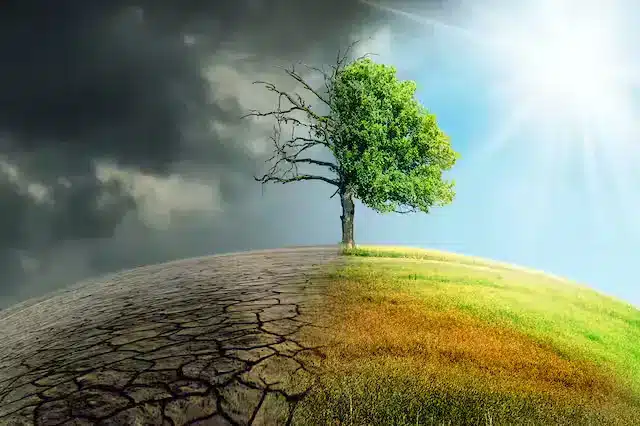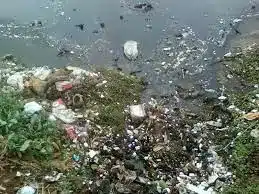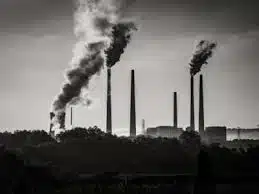Global Efforts to Protect the Environment
Here we discuss the efforts to protect the environment at the International and National(India) level. Although we formed several programs and protocols to protect the environment, the success we got majorly only in Montreal Protocol. Montreal Protocols are formed to save the Ozone layer.
For climate change, in the third COP of UNFCCC, we created Kyoto Protocol for the reduction of GHGs but that failed due to not the participation of countries like the USA. In Kyoto, we made it legally binding for richer countries to cut carbon emissions and also we kept the provision of common but differentiated responsibilities(discussed later in the article).
Now total focus shifted to Paris Agreement, which makes provision for nationally determined contributions. That means you have to declare how much you cut carbon emissions. Also, it has the aim of 1.5 degrees centigrade in the best approach and at least 2 degrees centigrade above the pre-industrial level at the last of this century.
International efforts to protect the environment
IUCN
The International Union for Conservation of Nature (IUCN) is an international organization working in the field of nature conservation and sustainable use of natural resources.
- IUCN was established on 5 October 1948, in Fontainebleau, France
- Its headquarters are in Gland, Switzerland
- It is best known for compiling and publishing the IUCN Red List, which assesses the conservation status of species worldwide.
- IUCN has observer and consultative status at the United Nations and plays a role in the implementation of several international conventions on nature conservation and biodiversity. (Note: It is not a member or part of the UN)
- To establish a stable financial basis for its work, IUCN participated in setting up the World Wildlife Fund (1961) now called the World Wide Fund for Nature WWF.
Ramsar Sites
- Wetlands of international importance are known as Ramsar Sites.
- Ramsar Convention: The Convention on Wetlands is an intergovernmental treaty that provides the framework for national action and international cooperation for the conservation and wise use of wetlands and their resources.
- It is named after the Iranian city of Ramsar, on the Caspian sea, where the treaty was signed on 2 February 1971.
- World Wetlands Day is celebrated on February 2nd.
- The convention entered into force in India on 1 February 1982.
- The RAMSAR Secretariat is based at the headquarters of the International Union for the Conservation of Nature (IUCN) in Gland, Switzerland.
- The Montreux Record is a register of wetland sites on the List of Wetlands of International Importance where changes in ecological character have occurred, are occurring, or are likely to occur as a result of technological developments, pollution or other human interference. It is maintained as part of the Ramsar List.
- Keoladeo National Park, Loktak Lake, are designated in Montreux record, and Chilka lake was designated but removed in 2002.
United Nations Conference on the Human Environment
- It was held in Stockholm, Sweden, in 1972 (5th June – 16th June). World Environment Day was celebrated every year on 5th June to raise awareness about environmental protection.
- The United Nations Conference on the Human Environment was the UN’s first major conference on the issue of the environment.
- The conference adopted the Stockholm Declaration and Plan of Action which set out principles for the preservation and enhancement of the human environment, with recommendations for international environmental action.
- The Conference also created the United Nations Environment Programme (UNEP), the first UN programme focused solely on environmental issues.
Ozone Layer Protection
Vienna Convention for the Protection of the ozone layer (1985)
- The convention was adopted on 22nd March, 1985 by the conference of The Vienna Convention for the Protection of the Ozone Layer is a Multilateral Environmental Agreement.
- It provided frameworks for international reductions in the production of chlorofluorocarbons due to their contribution to the destruction of the ozone layer, resulting in an increased threat of skin cancer and others.
Montreal Protocol on substances that deplete ozone layer, 1987 to the Vienna Convention
- The Protocol came into force in 1989.
- The protocol set targets for reducing the consumption and production of a range of ozone depleting substances.
- The 1987 Montreal Protocol on Substances that Deplete the Ozone Layer and its succeeding amendments were subsequently negotiated to control the consumption and production of anthropogenic ozone-depleting substances (ODSs) and some hydrofluorocarbons (HFCs).
- ODSs include chlorofluorocarbons (CFCs), bromine containing halons and methyl bromide, HCFCs, carbon tetrachloride (CCl4), and methyl chloroform.
- These ODSs are long-lived (e.g., CFC-12 has a lifetime greater than 100 years) and are also powerful GHGs.
- The adoption of the 2016 Kigali Amendment to the Montreal Protocol will phase down the production and consumption of some HFCs and avoid much of the projected global increase and associated climate change.
- In a major innovation the protocol recognized that all nations should not be treated equally. The agreement acknowledges that certain countries have contributed to ozone depletion more than others.
- It also recognizes that a nation‘s obligation to reduce current emissions should reflect its technological and financial ability to do so. Because Of this, the agreement sets more stringent standards and accelerated the phase-out timetable to countries that have contributed most to ozone depletion.
- India accepted this protocol along with its London Amendment in September 1992.
- The Ministry of Environmentand Forest has established an ozone cell and a steering committee on the protocol to facilitate implementation of the India country program, for phasing out ozone depleting substances production by 2010 to meet the commitments India has also taken policy decisions.
- The Ozone Depleting Substances (Regulation and Control) Rules 2000 were drafted under Environment (protection) Act, 1986.
Kigali Amendment to Montreal Protocol
- On October 15, 2016, with the United States’ leadership, 197 countries adopted an amendment to phase down HFCs under the Montreal Protocol in Kigali, Rwanda.
- The Kigali Amendment aims for the phase-down of hydrofluorocarbons (HFCs) by cutting their production and consumption.
- The goal is to achieve over 80% reduction in HFC consumption by 2047.
- Given their zero impact on the depletion of the ozone layer, HFCs are currently used as replacements of hydrochlorofluorocarbons (HCFCs) and chlorofluorocarbons (CFCs) in air conditioning, refrigeration and foam insulation, however they are powerful greenhouse gases.
- The Kigali Amendment to the Montreal Protocol is legally binding and will come into force from January 1, 2019.
- Under the amendment :
- developed countries will reduce HFC consumption beginning in 2019.
- most developing countries will freeze consumption in 2024,
- some developing countries including India with unique circumstances will freeze consumption in 2028.
- The plan also provides financing to certain countries, to help them transition to climate-friendly alternatives.
- Developed countries must reduce HFCs use by 10% by 2019 from 2011-2013 levels, and 85% by 2036.
- A second group of developing countries, including China and African nations, are committed to launching the transition in 2024. A reduction of 10% compared with 2020-2022 levels should be achieved by 2029, and 80% by 2045.
- A third group of developing countries, including India, Pakistan and Arab Gulf states, must begin the process in 2028 and reduce emissions by 10% by 2032 from 2024-2026 levels, and then by 85% by 2047.
Intergovernmental Panel on Climate Change (IPCC)
- IPCC is a scientific intergovernmental body under the auspices of the United Nations.
- It was first established in 1988 by two United Nations organizations, the World Meteorological Organization (WMO) and the United Nations Environment Programme (UNEP).
- Membership of the IPCC is open to all members of the WMO and UNEP.
- The IPCC produces reports that support the UNFCCC.
- IPCC reports cover all relevant information to understand the risk of human-induced climate change, its potential impacts and options for adaptation and mitigation.
- The IPCC does not carry out its own original research.
Rio Summit/Earth Summit
- It was a United Nations summit, held in Rio de Janeiro (Brazil) in 1992.
- This global conference was held on the occasion of the 20th anniversary of the first Human Environment Conference in Stockholm, Sweden, in 1972.
- The results of the Conference were the following documents:
- The Framework Convention on Climate Change (UNFCCC)
- The Convention on Biological Diversity
- The Statement on Forest Principles
- The Rio Declaration
- Agenda 21
Convention on Biological Diversity, 1992
The Convention on Biological Diversity (CBD) entered into force on 29 December 1993. It has 3 main objectives:
- The conservation of biological diversity
- The sustainable use of the components of biological diversity.
- The fair and equitable sharing of the benefits arising out of the utilization of genetic resources
- The Convention was opened for signature on 5 June 1992 at the United Nations Conference on Environment and Development (the Rio “Earth Summit”).
- This convention is a legally binding framework treaty that has been ratified by180 countries.
- The CBD Secretariat is based in Montreal, Canada and it operates under the United Nations Environment Programme.
- The areas that are dealt by convention are conservation of biodiversity,sustainable use of biological resources and equitable sharing of benefits arising fromtheir sustainable use.
- The convention came into force in 1993. Many biodiversity issuesare addressed including habitat preservation, intellectual property rights, biosafety andindigenous people‘s rights.
Convention on Biodiversity CBD wants three things and it leads to three more things:
| Protect biodiversity | COP meetings, Aichi Targets. |
| Safe use of bio-technology | Cartagena Biosafety Protocol |
| Safe use of biotechnology | Nagoya Genetic Resources Protocol |
UNFCCC
- United Nations Framework Convention on Climate Change (UNFCCC)
- Created because of the Rio Summit/ Earth Summit of 1992.
- It is an international treaty for reducing greenhouse gas emissions.
- The UNFCCC entered into force in 1994 and has been ratified by 197 countries.
- It is the parent treaty of the 2015 Paris Agreement. It is also the parent treaty of the 1997 Kyoto Protocol.
- The UNFCCC secretariat (UN Climate Change) is the United Nations entity tasked with supporting the global response to the threat of climate change. It is located in Bonn, Germany.
- Its objective is to achieve stabilization of greenhouse gas concentrations in the atmosphere at a level that would prevent dangerous repercussions within a time frame so as to allow ecosystems to adapt naturally and enable sustainable development.
What is the Conference of the Parties (COP)?
- The nations, who’ve signed the UNFCCC convention, meet every year to discuss climate change strategy.
- These meetings are called Conference of the Parties (COP)
- The first COP (COP 1) was held in Berlin.
- The third COP (COP 3) in 1997, was held in Kyoto, Japan. It was here the famous Kyoto Protocol came into existence. Kyoto Protocol wants the Industrialised nations to reduce their greenhouse gas emission by around 5.2% by 2012. (measured against 1990 levels)
What are “common but differentiated responsibilities”?
- Developed countries such as the US, and the UK have already polluted the atmosphere with greenhouse gases (GHGs) through industrialization. So they’re the ones who created/started global warming and all the mess.
- While Developing countries (India and Brazil) have started polluting the world only recently.
- Therefore, developing countries such as India, and Brazil should share less of the burden of lowering overall emissions.
- And Developed countries (US, UK) should bear more responsibility in fixing this global warming mess, etc. because they’re the ones more responsible for it.
- So, while it is the “Common” responsibility of every nation of this world, to reduce Greenhouse gas emissions, there should be some difference between the responsibility given to developed countries and developing countries.
- Kyoto Protocol follows that principle and assigns separate responsibilities to the countries.
The Kyoto protocol
In 1997, the Kyoto Protocol was adopted which aimed to achieve a legally binding emissions reduction by industrialized countries.
Key elements of Kyoto Protocol:
Target-
- Reduction of collective Greenhouse gas (GHG) emissions by 5.2% from the 1990 level by 2012. This is known as the “first commitment period”
- Second commitment period (2013-2020) to reduce emissions by 18% was adopted by the Doha Amendment (2012)
Approach: Equity and Common but differentiated responsibilities and respective capabilities (CBDR)- Legally binding targets for 39 developed countries. No legally binding targets for developing countries.
Mechanisms:
- Clean Development mechanism: It involves investment in emission reduction or removal enhancement projects in developing countries that contribute to their sustainable development
- Joint implementation: It enables developed countries to carry out emission reduction or removal enhancement projects in other developed countries.
- Emission trading: It allows countries that have emission units (carbon dioxide) to spare (emissions permitted them but not “used”) to sell this excess capacity to countries that are over their targets.
Failures of Kyoto Protocol:
- Exclusion of developing countries from emissions reduction targets notably Brazil, South Africa, India, and China (BASIC) made the Kyoto Protocol inequitable.
- Disagreement on the strategies to achieve emissions reduction targets and poorly designed mechanisms that did not effectively reduce GHG emissions.
- A very low number of member countries ratified– For example the USA never ratified.
- Poor compliance by member countries- For example: Japan failed to meet their obligations, and chose not to participate in the second commitment period.
- Top-down approach– The Kyoto Protocol had a top-down approach as it had legally binding targets providing very less flexibility to member countries
Paris Agreement
2nd Agreement on Climate Change.
- As the Kyoto Protocol ultimately failed to induce significant emission reductions on a global scale, the Paris Agreement was adopted at the COP21 held in Paris.
- At COP 21 in Paris, on 12 December 2015, Parties to the UNFCCC reached a landmark agreement to combat climate change and to accelerate and intensify the actions and investments needed for a sustainable low carbon future.
- The Paris Agreement’s central aim is to strengthen the global response to the threat of climate change by keeping a global temperature rise this century well below 2 degrees Celsius above pre-industrial levels and to pursue efforts to limit the temperature increase even further to 1.5 degrees Celsius.
- Additionally, the agreement aims to increase the ability of countries to deal with the impacts of climate change, and at making finance flows consistent with low GHG emissions and climate-resilient pathways.
- The Paris Agreement requires all Parties to put forward their best efforts through “nationally determined contributions” (NDCs).
Global Environment Facility (GEF)
It is a FINANCIAL MECHANISM for five major international environmental conventions: the Minamata Convention on Mercury, the Stockholm Convention on Persistent Organic Pollutants (POPs), the United Nations Convention on Biological Diversity (UNCBD), the United Nations Convention to Combat Desertification (UNCCD) and the United Nations Framework Convention on Climate Change (UNFCCC).
U.N. Convention on Desertification, 1994
- An intergovernmental negotiating committee for the elaboration of an international convention to combat desertification in countries experiencing serious drought and/ or desertification was recommended in 1992 U.N. Conference onEnvironment and Development.
- The U.N. The General Assembly established a committee in1992 which helped formulate the convention on desertification.
- It is a legally binding convention linking development and environment to sustainable land management.
- The UNCCD addresses particularly the arid, semi-arid & dry sub-humid areas, called drylands, where some of the most vulnerable ecosystems and peoples are found.
- The convention endorses and employs a bottom-up approach to international environmental cooperation.
- The Convention aims at tackling desertification through national, regional and sub-regional action programmes. India hosts the network on agroforestry and soil conservation.
UN 2030 Agenda for Sustainable Development
- The UN 2030 Agenda for Sustainable Development was launched in 2015.
- The UN 2030 Agenda’s Sustainable Development Goals (SDG) aim at eradicating poverty in all forms and “seek to realize the human rights of all and achieve gender equality”.
- The Sustainable Development Goals (SDGs) are a collection of 17 global goals, and their 169 targets, set by the United Nations General Assembly in 2015 for the year 2030 (UNGA resolution “2030 Agenda”).

India’s efforts to protect the environment
India as a country has been identifying measures that promote development objectives while also yielding co-benefits for addressing climate change effectively since 2008. The National Action Plan on Climate Change or NAPCC for the same was formally launched on 30th June, 2008 for the same. India has been relying on this action plan since then to bring about a change in the situation. NAPCC has eight core national missions that focus on promoting understanding of climate change, adaptation and mitigation, energy efficiency and natural resource conservation.
The eight missions are:
- National Solar Mission
- National Mission for Enhanced Energy Efficiency
- National Mission on Sustainable Habitat
- National Water Mission
- National Mission for Sustaining the Himalayan Ecosystem
- National Mission for a Green India
- National Mission for Sustainable Agriculture
- National Mission on Strategic Knowledge for Climate Change
India is a Party to the United Nations Framework Convention on Climate Change, its Kyoto Protocol and Paris Agreement. Under the Paris Agreement in 2015, India submitted its Nationally Determined Contribution (NDC) balancing the concerns and priorities of climate change, sustainable development including poverty eradication, and economic growth of the country.
India has co-founded the International Solar Alliance (ISA) with France, and in doing so, is leading the global movement towards solar power, with a focus on promoting energy access and transition. Already, the ISA has 110 member countries and is pursuing nine programmes promoting 10GW of off-grid and grid-connected solar projects in developing countries.
INDIA’S UPDATED NATIONALLY DETERMINED CONTRIBUTION
India’s new climate targets announced at the 26th Conference of Parties by the Honorable Prime Minister. The five-fold strategy is called the panchamrita and five points that aims achieve success are:
- 1. India will get its non-fossil energy capacity to 500 gigawatt (GW) by 2030.
- 2. India will meet 50 per cent of its energy requirements from renewable energy by 2030.
- 3. India will reduce the total projected carbon emissions by one billion tonnes from now onwards till 2030.
- 4. By 2030, India will reduce the carbon intensity of its economy by less than 45 per cent from its 2005 level.
- 5. By the year 2070, India will achieve the target of Net Zero.
Complete updated nationally determined contributions are:
- To put forward and further propagate a healthy and sustainable way of living based on traditions and values of conservation and moderation, including through a mass movement for ‘LIFE’– ‘Lifestyle for Environment’ as a key to combating climate change [UPDATED].
- To adopt a climate friendly and a cleaner path than the one followed hitherto by others at corresponding level of economic development.
- To reduce Emissions Intensity of its GDP by 45 percent by 2030, from 2005 level [UPDATED].
- To achieve about 50 percent cumulative electric power installed capacity from non-fossil fuel-based energy resources by 2030, with
the help of transfer of technology and low-cost international finance including from Green Climate Fund (GCF) [UPDATED]. - To create an additional carbon sink of 2.5 to 3 billion tonnes of CO2 equivalent through additional forest and tree cover by 2030.
- To better adapt to climate change by enhancing investments in development programmes in sectors vulnerable to climate change,
particularly agriculture, water resources, Himalayan region, coastal regions, health and disaster management. - To mobilize domestic and new & additional funds from developed countries to implement the above mitigation and adaptation actions in view of the resource required and the resource gap.
- To build capacities, create domestic framework and international architecture for quick diffusion of cutting edge climate technology in India and for joint collaborative R&D for such future technologies.
National Green Tribunal Act, 2010
It was established in concurrence to Rio Summit 1992 to provide judicial and administrative remedies for the victims of the pollutants and other environmental damage.
It also agrees with article 21, the Right to a healthy environment to its citizens of the constitution.
The NGT has to dispose of the cases presented to it within 6 months of their appeals.
NGT has original jurisdiction on matters related to substantial questions of the environment.
NGT deals with the civil cases under the 7 acts related to the environment:
- Water (Prevention And Control Of Pollution) Act, 1974
- Water (Prevention And Control Of Pollution) Cess Act, 1974
- Air (Prevention And Control Of Pollution) Act, 1977
- Forest Conservation Act, 1980
- Environmental Protection Act, 1986
- Public Liability Insurance Act 1991
- Biological Diversity Act, 2002
2 acts have been kept out of the jurisdiction of NGT:
- Wildlife Protection Act, 1972
- Scheduled Tribes and Other Traditional Forest Dwellers (Recognition of Forest Rights) Act, 2006 (FRA)
The decisions of the NGT can be challenged in High Courts and the Supreme Court.
Also, refer :
- Download the pdf of Important MCQs From the History Of Ancient India
- List Of Important Inscriptions In India
- Environmental organizations in India
- Important MCQs On Air Pollution
- Important Multiple-Choice Questions On Air Pollution








